Is Your Project Ecosystem Truly Agile?
Explains why true agility requires end-to-end automation and short feedback loops, not just Agile teams, to maximise value and efficiency for …
Deliver valuable, usable products through iterative learning, customer feedback, and continuous improvement. Align strategy, discovery, and delivery to maximise outcomes and reduce risk.


Product Development is the systematic process of delivering valuable and usable products through iterative learning, customer feedback, and continuous improvement. It encompasses the alignment of strategy, discovery, and delivery to maximise outcomes while minimising risk. This concept is crucial as it enables teams to respond effectively to changing market demands and customer needs, fostering an environment where innovation can thrive.
By integrating practices from Agile, Lean, and DevOps, Product Development promotes a culture of collaboration and transparency, allowing cross-functional teams to work cohesively towards shared goals. It emphasises the importance of understanding customer feedback loops, which inform product iterations and enhancements, ensuring that the end product not only meets but exceeds user expectations.
The long-term, systemic nature of Product Development means that it is not merely about delivering a product but about creating a sustainable framework for ongoing value delivery. This approach encourages teams to embrace experimentation and learning, leading to improved efficiency and effectiveness in product delivery. By focusing on continuous improvement and adaptability, organisations can cultivate resilience and maintain a competitive edge in an ever-evolving landscape. The emphasis on value delivery ensures that every effort contributes meaningfully to the organisation’s strategic objectives, reinforcing the importance of a well-defined Product Development process in achieving long-term success.
Explains why true agility requires end-to-end automation and short feedback loops, not just Agile teams, to maximise value and efficiency for …
Explains how true self-management in Scrum requires active, disciplined effort from Product Owners, Scrum Masters, and Developers, not chaos or lack …
Throughput is a delivery metric used to inspect how much work is completed per unit of time, enabling analysis of flow efficiency and system …
Explores how frequent code deployments improve code quality, reduce technical debt, enable faster feedback, and support iterative, user-focused …
Explains why burndown charts hinder agile teams, highlighting the pitfalls of detailed upfront planning and advocating for minimal, adaptive Sprint …
Explains how to create, apply, and improve a Definition of Done (DoD) in Scrum to ensure software quality, transparency, and consistent delivery of …
Practical experience is essential for effective Scrum Masters; certification alone is insufficient. True expertise comes from guiding teams, solving …
Guidance for new Scrum teams on building strong foundations, embracing empiricism, Scrum values, continuous learning, and the Scrum Master's role in …
Failing to deliver a usable product each agile iteration leads to lost trust, technical debt, poor adaptability, misaligned expectations, low morale, …
Explores how breaking features into small experiments boosts software delivery, enabling teams to deliver more features, reduce risk, and improve …
Explores how visionary Product Owners at Microsoft drove Agile transformation, shortened feedback cycles, and reshaped product development culture and …
Explains why empowering teams to adapt their processes boosts agility, reduces waste, and fosters innovation, using real-world examples and practical …
Explores why teams ignore clear signals from Agile and Scrum, highlighting how culture and fear hinder continuous improvement and effective …
Explores how focusing on Scrum’s core principles, empiricism, transparency, and value delivery, leads to true agile success, beyond just following …
Explains why regular backlog refinement is essential in Scrum, how to make backlog items ready for Sprint Planning, and ways to measure effective …
Explores how empowering Agile teams to adapt their processes boosts flexibility, continuous improvement, collaboration, and maximises value and return …
Mandating Agile or Scrum fails without cultural change; true agility requires trust, transparency, and a supportive environment, not just tools or …
Explains Scrum’s four key value areas, current value, unrealised value, ability to innovate, and time to market, for data-driven product and …
Explains how Scrum teams can balance Sprint work and Refinement, with strategies and visual tools to track, manage, and visualise both for better …
Explains how empirical Agile models improve project outcomes by increasing visibility, enabling change, reducing risk, and delivering value …
Explores Agile’s historical roots, the loss of human connection in business, the impact of competence gaps, and why a return to core Agile principles …
Learn how to spot fake Agile practices using six key questions from the US Department of Defense, and discover steps to assess and improve true Agile …
Learn how to assess and improve your organisation’s innovation capability using evidence-based management and key metrics like technical debt, …
Explores why diligence, consistent attention to quality and standards, is vital in Agile teams, how it’s often overlooked, and practical steps to …
Explains why a clear Definition of Done is vital in Agile and Scrum for quality delivery, transparency, and risk mitigation, with tips for team …
Understand and apply Agile Values and Principles based on first principles. Build a foundation for true agility and continuous value delivery
Learn how Evidence-Based Management uses data to guide Agile teams, improve decision-making, track value, and boost innovation, customer satisfaction, …
Multitasking reduces team productivity. Learn how focusing on finishing tasks, limiting work in progress, and value-based prioritisation boosts …
Explores how applying 'less is more' in Agile boosts productivity and quality by focusing on high-value tasks, reducing waste, and streamlining team …
Delivering usable, working products frequently is key to reducing risk in Agile. Focus on feedback, automation, and lean practices over excessive …
Explains how Scrum teams collaboratively define a clear, achievable Sprint goal through early stakeholder input, planning, consensus, and ongoing …
Explains how to gather key metrics for evidence-based management in software organisations, focusing on value delivery, time to market, and ability to …
A clear summary of Scrum’s framework, roles, events, artefacts, and values, explaining how teams use Scrum to deliver value and adapt to complex …
Explores how applying the "just enough and no more" principle in agile practices boosts efficiency, reduces waste, and helps teams focus on delivering …
Learn how product owners can boost team success by connecting work to value, making evidence-based decisions, and improving time to market through …
Explains how Scrum Masters and Agile coaches boost team motivation by setting clear goals, fostering engagement, recognising achievements, and …
Explains how the APS course uses practical exercises and simulations to help people understand, apply, and improve scrum practices in real-world …
Guides a 160-minute Sprint Review workshop using Liberating Structures to inspect product progress, gather feedback, and plan next steps for Scrum …
Explores why focusing on value delivery and psychological safety leads to better Agile team outcomes than fixating on estimates, output metrics, or …
Explains how adopting test-first practices in software development improves quality, reduces bugs, and enables confident continuous delivery by …
Explores the impact of lacking feedback and engagement in Agile teams, highlighting risks and offering strategies to boost stakeholder involvement and …
Explores how greed in Agile leads to overwork and reduced value, offering strategies for value-driven delivery, balanced sprints, team trust, and …
Explains how feature flags enable safe, incremental software releases, support continuous delivery, and use user feedback to improve features before …
Explains how to use data in Agile management to guide decisions and behaviours, focusing on informed outcomes without letting metrics control teams or …
Explains the Sprint Review workshop, detailing its role in Agile teams for stakeholder engagement, market alignment, and continuous product …
Ability to Innovate is one of the four key value areas of Evidence‑Based Management that gauges organizational capability in terms of innovation. It …
Step-by-step guide for running a Sprint Review, including presenting the increment, gathering feedback, updating the backlog, forecasting, and …
Explains how Scrum exposes hidden organisational problems through transparency and feedback, enabling teams to identify issues, improve processes, and …
Compares Agile’s risk mitigation through incremental, usable products with traditional project management’s reliance on documentation, highlighting …
Explores how Agile’s true value lies in delivering outcomes and adapting to change, not just following rituals or procedures, and highlights the need …
Explains why relying on Agile burndown charts leads to over-planning and false progress, and advocates for minimal, adaptive planning and continuous …
Explores how product owners make critical decisions to pivot or persevere in Agile projects, balancing data, instinct, feedback, and adaptability for …
Explores how Agile success relies on team collaboration, embracing change, continuous improvement, and focusing on delivering real value to customers …
Learn essential principles for effective Sprint planning in Agile, including understanding the product backlog, setting clear goals, and fostering …
Explains why agile teams need a clear understanding of product vision and strategic goals to boost alignment, ownership, decision-making, and …
Explains how evidence-based management helps Agile teams use data and key metrics to measure progress, make informed decisions, and drive continuous …
Learn practical strategies for effective product backlog management in Agile, including prioritisation, refinement, stakeholder engagement, and tools …
Learn how to plan and prioritise effectively in Scrum by aligning with business goals, assessing value and risk, and keeping a lean, focused product …
Guidance for running effective Daily Scrum meetings, focusing on collaboration, transparency, and actionable planning to help teams achieve their …
Explores how silence in agile teams signals disengagement, and offers strategies to boost stakeholder participation, open communication, and effective …
We partner with businesses across diverse industries, including finance, insurance, healthcare, pharmaceuticals, technology, engineering, transportation, hospitality, entertainment, legal, government, and military sectors.

Qualco

Philips

New Signature
Boxit Document Solutions

ProgramUtvikling

Healthgrades

Cognizant Microsoft Business Group (MBG)

Sage

Xceptor - Process and Data Automation

Higher Education Statistics Agency

Alignment Healthcare

Genus Breeding Ltd
NIT A/S

Lean SA

Hubtel Ghana

Lockheed Martin

Epic Games

Bistech

Washington Department of Enterprise Services

Nottingham County Council

New Hampshire Supreme Court

Ghana Police Service

Washington Department of Transport

Department of Work and Pensions (UK)

ALS Life Sciences

Qualco

Slicedbread

Slaughter and May

Bistech
Boxit Document Solutions